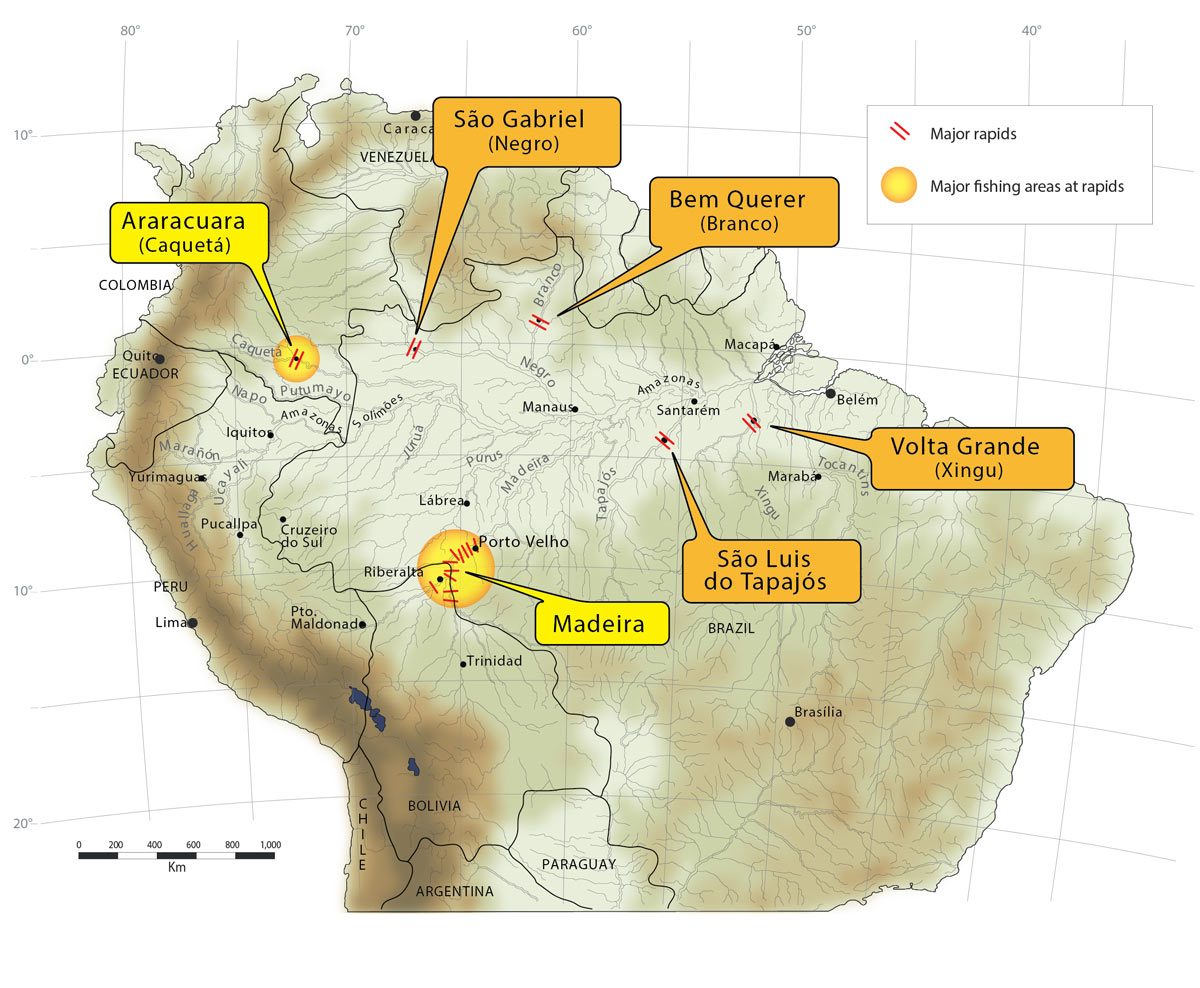
Most of the Amazon Basin is at a low elevation of less than 300 meters. There are at least 40,000 km of navigable rivers in the Amazon and this gives a good idea of how unobstructed the river channels are. In an upstream direction the first large cataracts of the 12 largest rivers are those of the Xingu River near the estuary. The Xingu rapids are approximately 150 km above the mouth of the Xingu River. Though a few species appear to be able to pass the rapids their populations are small and there are no major fisheries for them.
The next major rapids are those of the Madeira River beginning just above Porto Velho. The Madeira rapids consist of 16 cataracts over a 360 km stretch of the river located mostly in Brazil, with a small segment in Bolivia. Although the Madeira River rapids are a well-known biogeographical barrier to many animal groups, such as the Amazon manatee, tucuxi dolphin and several fish groups, including the giant pirarucu (Arapaima spp.) and jaraquis (Semaprochilodus spp.), many migratory fish species nevertheless fought their way through the turbulent waters during their annual migrations. The Santo Antônio and Jirau dams now block migrations though a fish pass has been constructed around the first though it is still unclear whether it will function effectively.
The Madeira rapids and especially the largest, the Cachoeira de Teotônio, were heavily exploited for migratory catfish since at least the late 1960s. Gaffs, cast nets, gill nets and line-and-hook were traditionally used at Teotônio to capture upstream migrating catfishes. The dourada was the most important species captured. The largest captures at the Teotônio were made in the early 1970s when catches were exported to other regions of Brazil. By the late 1980s, gold mining dredges had taken over the rapids. Fishermen reported that the large number of dredges in the Upper Madeira during the 1980s gold rush impeded catfish migrations and commercial fishing largely stopped. Fishermen were also attracted to gold mining activities. The Teotônio fisheries have disappeared because the new Santo Antônio Dam that has submerged the cataracts. Gold mining operations continue but they are now located mostly in Bolivia near the last of the Madeira River’s cataracts, the Cachuela de Esperanza.
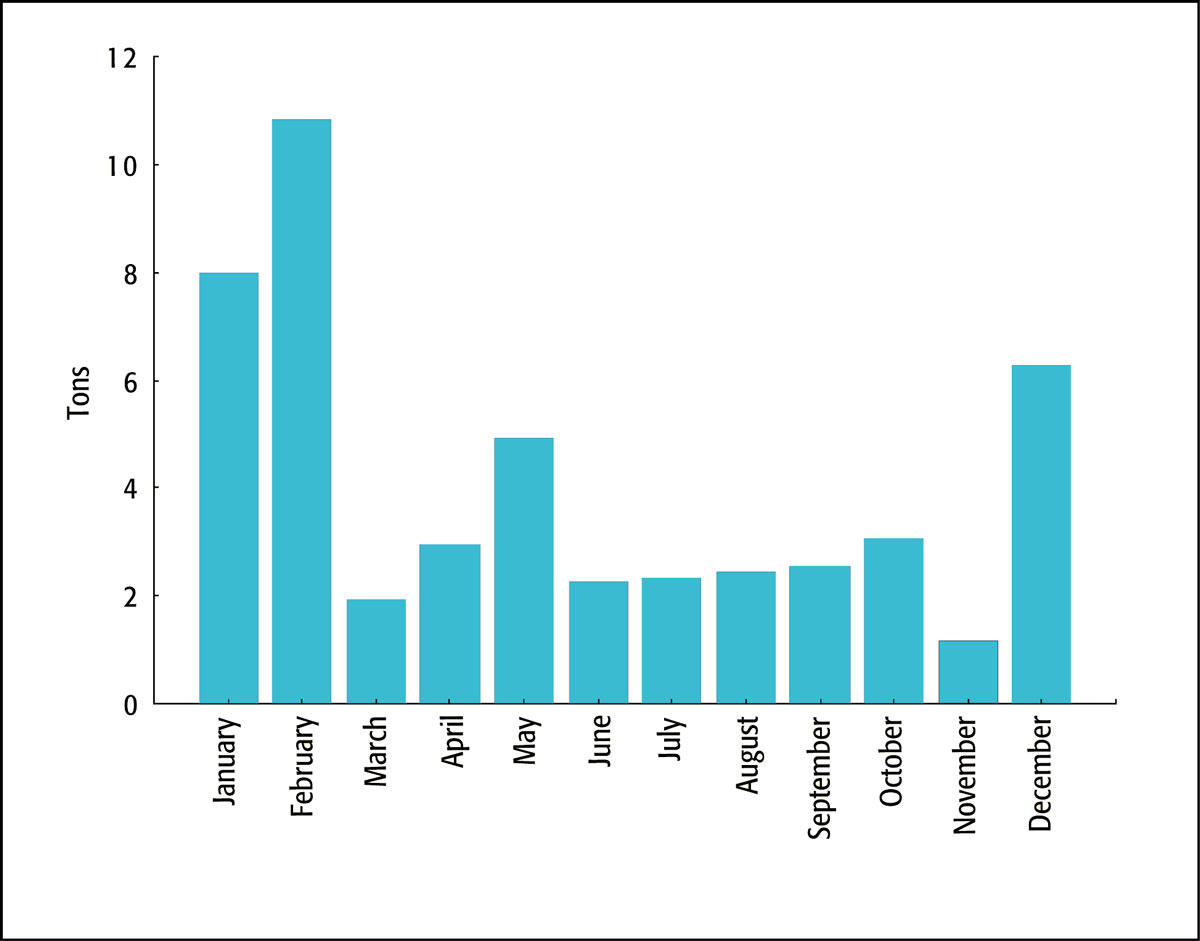

The only other cataracts that have been important to commercial fisheries in the Amazon are those known as the Chorro de Araracuara of the Caquetá River in Colombia. The most important species captured are large migratory catfishes. A small fish plant operates in La Pedrera and most of the catch is exported by plane to Bogotá. Most fish are captured with harpoons thrown from rocks along the shores or with or line-and-hook. There are many small and local cataract fisheries in the Amazon Basin that are of little commercial importance. Cataract fisheries of the Upper Negro River still employ a variety of indigenous techniques, such as weirs, though fish poison is also commonly used. In contrast to commercial fisheries at cataracts, which usually exploit species more than 30 cm in length, indigenous groups often fish small species less than 5 cm in length. These fisheries represent an excellent opportunity to understand not only indigenous fishing but also the migratory patterns of small fishes, of which there is almost no scientific literature.
-
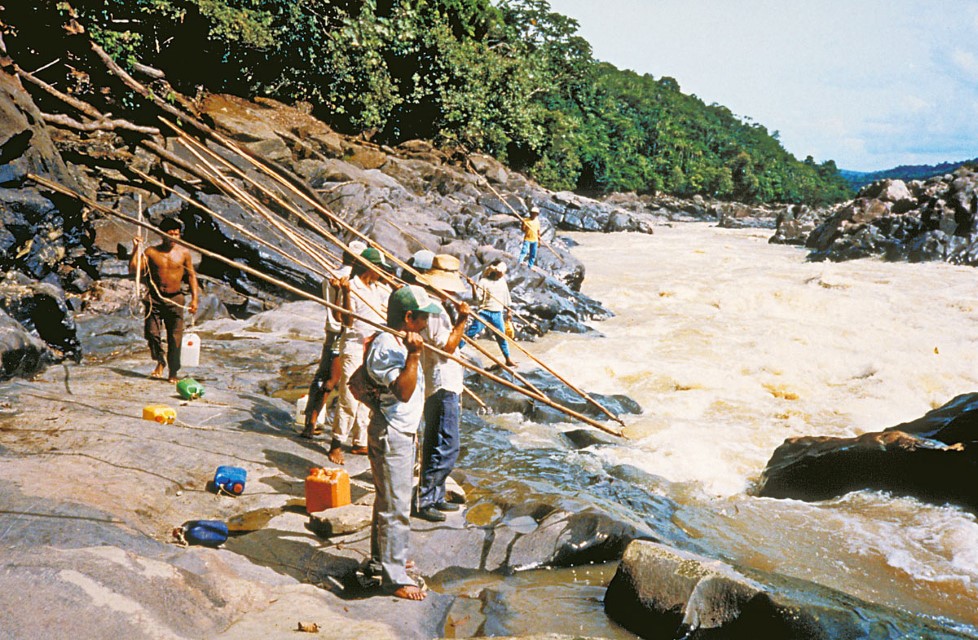
Cataratas 1
Spear fishermen of the middle Rio Caquetá waiting for upstream migrating catfish. Photographer: Carlos Alberto Rodriguez
-

Cataratas 2
Capture of dourada (Brachyplatystoma rousseauxii) with large cast nets at the beginning of rising water at the Cachoeira de Teotônio. Near Porto Velho, Rondônia. Department – Country: Roraima – Brazil Main Basin – Sub Basin: Negro – Branco Main Stem Photographer: Michael Goulding
-
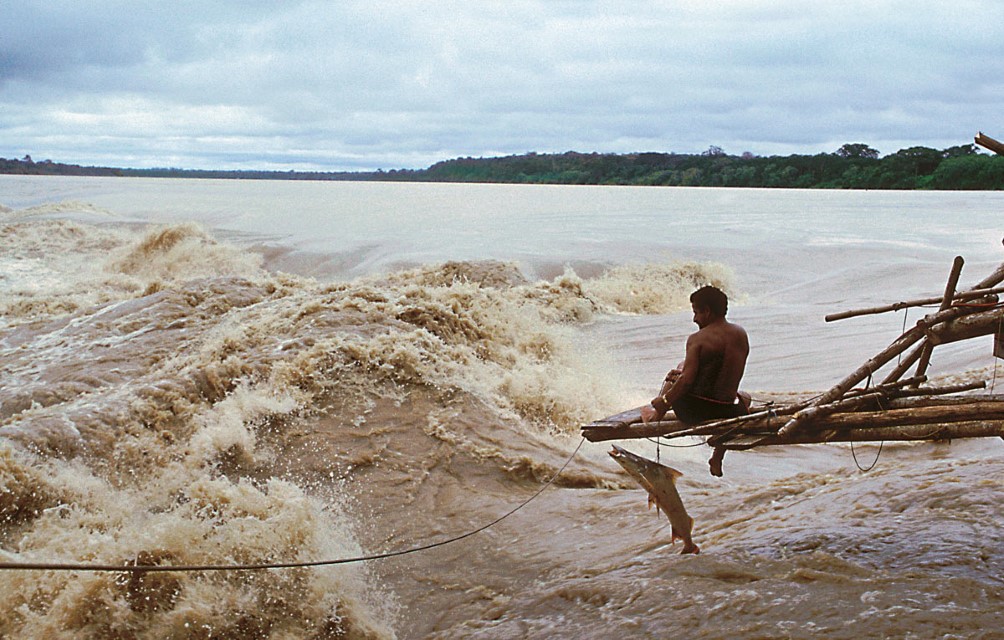
Cataratas 3
Fishing from scaffolding at the Cachoeira de Teotônio of the Rio Madeira during the rising water period when dourada (Brachyplatystoma rousseauxii) are migrating upstream. Photographer: Michael Goulding
-
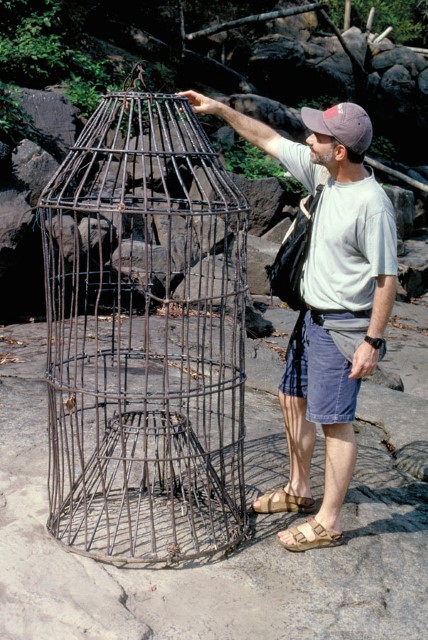
Cataratas 4
Photographer: Michael Goulding
-
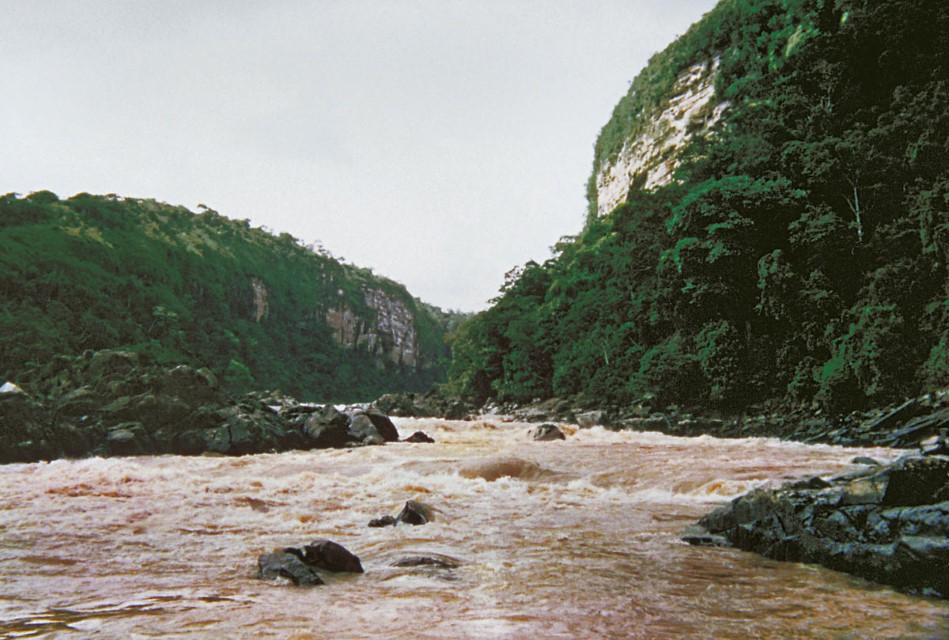
Cataratas 5
The Choro de Araracuara of the middle Rio Caquetá of Colombia is impassable for navigation but migratory catfish move upstream through it to reach spawning habitats. Photographer: Carlos Alberto Rodriguez
-

Cataratas 6
Scaffolding built near the Choro de Araracuara of the middle Rio Caquetá as a platform for spearing upstream migrating catfish. Photographer: Carlos Alberto Rodriguez
-
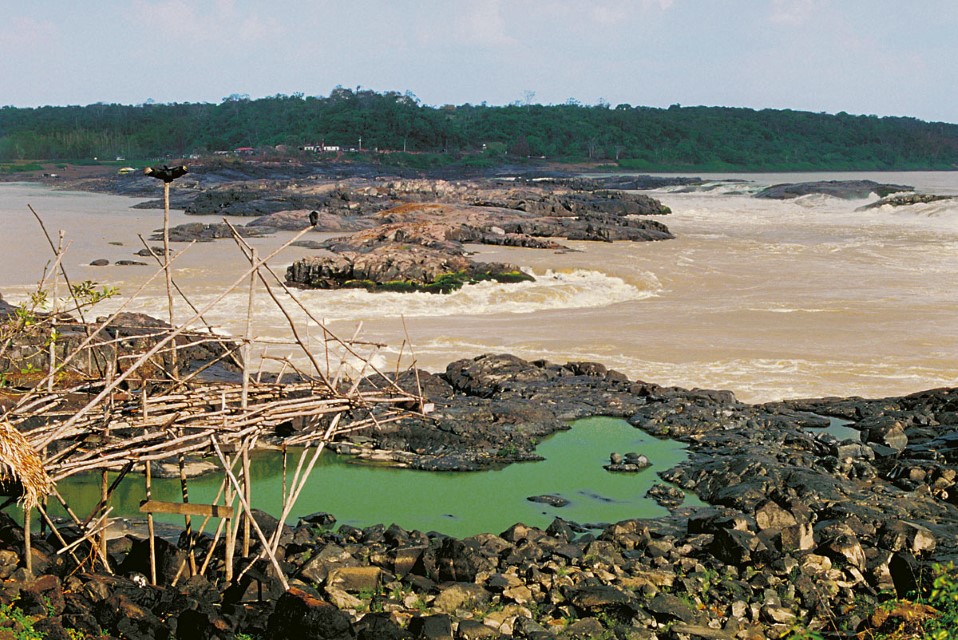
Cataratas 7
The Cachoeira de Teotônio of the Rio Madeira during the low water period. Photographer: Michael Goulding
-
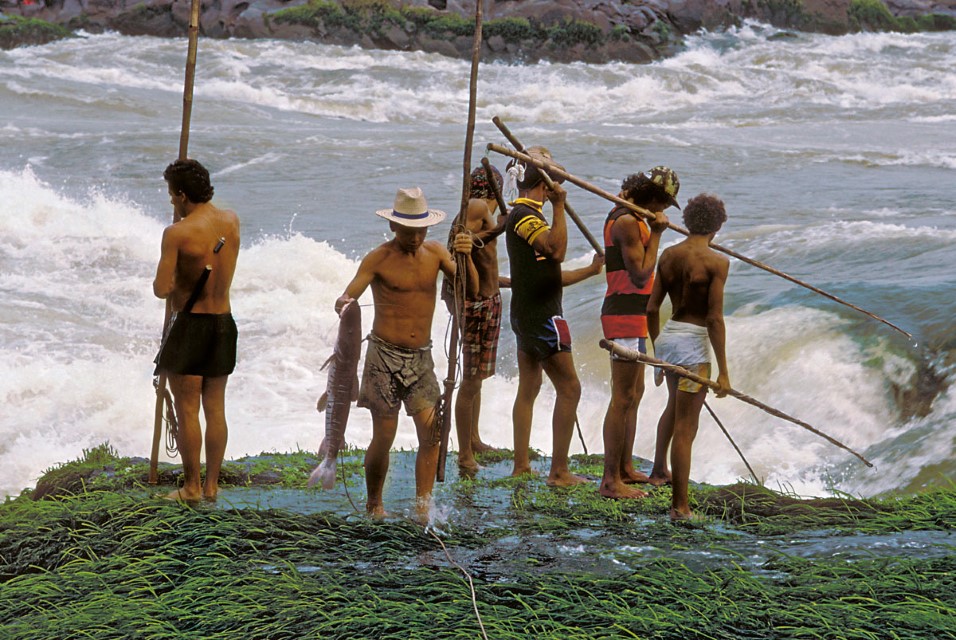
Cataratas 8
Gaff fishing for catfish at the Cachoeira de Teotônio of the Rio Madeira during the low water period. Department – Country: Pará – Brazil Main Basin – Sub Basin: Amazon Main Stem – Eastern Amazon Main Stem Photographer: Michael Goulding
-
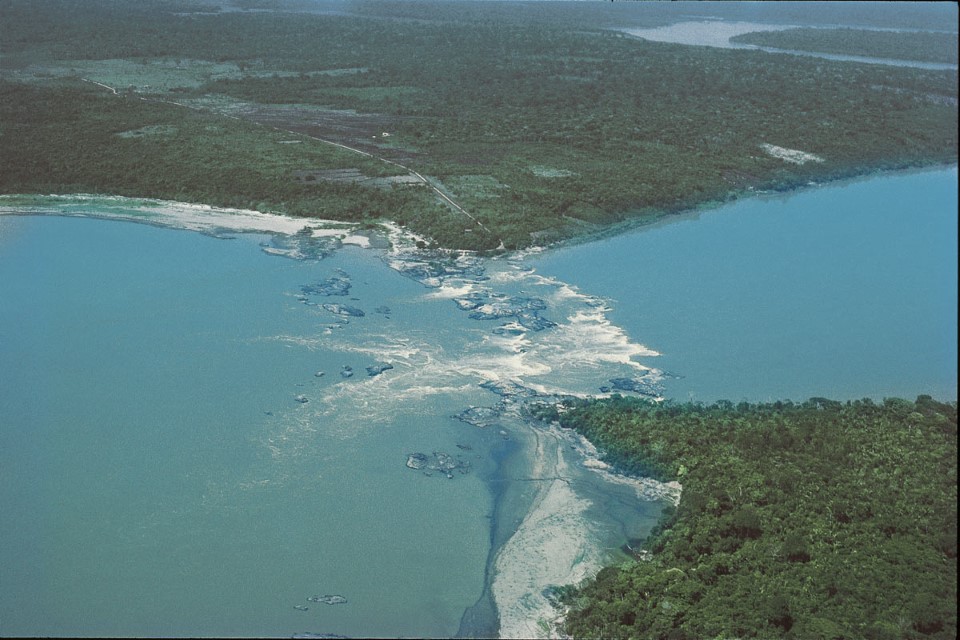
Cataratas 9
The Cachoeira de Teotônio of the Rio Madeira present a barrier to many migratory fish species. Near Porto Velho, Rondônia. Department – Country: Roraima – Brazil Main Basin – Sub Basin: Negro – Branco Main Stem Photographer: Michael Goulding
-

Cataratas 10
Curimatá (Prochilodus nigricans) migrating upstream in the Rio Madeira during the low water piracema migration. At the Cachoeira de Teotônio curimatá can be seen jumping to make their way upstream through the turbulent waters. Photographer: Michael Goulding
CONTEXT
The Andes
Cataratas
Floodplain or Várzea
River Mouth Bays
River Channel
Estuary & Amazon Coast
Marajó and Inner Delta
